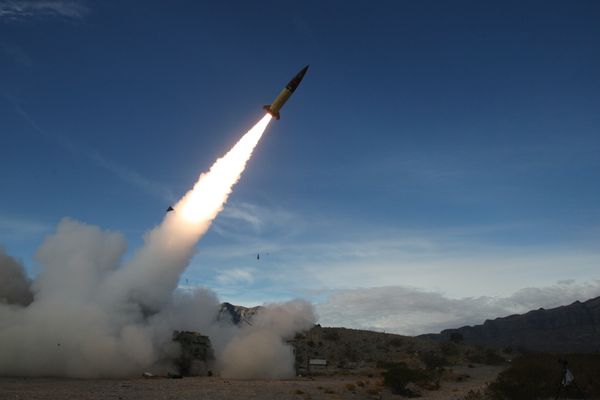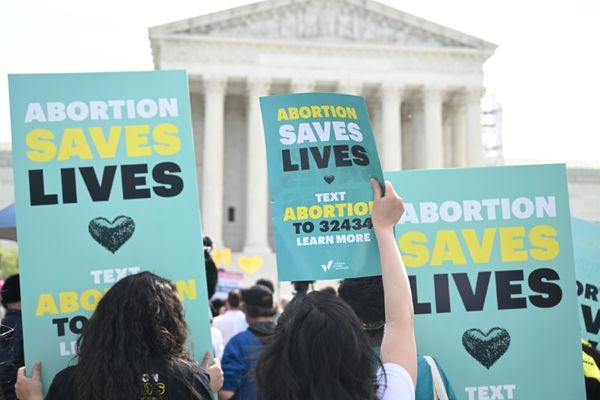
On 18 September 2022, Kerala chief minister Pinarayi Vijayan met his Karnataka counterpart BR Bommai at the latter’s residence in Bengaluru. And on the agenda were two proposed rail links between the states—these would have shortened the distance between Kochi and Bengaluru and helped commuters like Sangeeth. But Karnataka rejected both, Bommai told reporters later.
You might also like
High gas prices: How India's gas economy works
Invesco to sell 5.5% Zee stake for $169.5mn
Why DMart disappoints investors
Shree Cement's good show fails to impress street
According to the Karnataka chief minister, the proposed railway lines—from Kasaragod to Dakshin Kannada, at an estimated cost of ₹1,200 crore, and the second from Mysuru to Thalassery (at over ₹5,000 crore)—run through eco-sensitive zones in Karnataka. Bommai did not mention it but the Karnataka government had also shown zero interest in an older proposal for a railway route connecting Nilambur in Malappuram to Nanjangud in Mysuru.
“We are sister states. But the three railway projects will pass through national parks, tiger sanctuaries and elephant sanctuaries. We have to weigh the benefit for Karnataka passengers against the environmental challenges due to the project," said Bommai.
The official response from the government of Kerala was cautious; it said the projects are still under consideration, subject to further discussions between the two states and the Union government.
But why do these rail lines matter to Kerala? And how likely are they to see the light of day?
Running out of roads
“For a complete consumer state like Kerala, which is nearing vehicle saturation on the highways, rail connectivity is a life-saver," said advocate T.M. Rasheed, convenor of the Nilgiris-Wayanad NH and railway action committee. Functional rail lines could act as a corridor between Kochi and Bengaluru, reducing travel time and speeding up movement of essential goods and commodities from neighbouring states. Not only that, with the International Container Trans-shipment Terminal (ICTT) in Kochi being fully operational, a shorter route to Bengaluru would benefit cargo movement big time. “Rail movement involves lower logistics costs and improved supply chain efficiency in any given circumstance," said a port official.
For instance, the Vallarpadam rail link, a 4.63-km long bridge, constructed in 2011 exclusively for transporting containers to and from the ICTT remains underutilized for this reason, even though transporting containers via rail route is more economical, said the same official. A shorter route to Bengaluru, where the Inland Container Depot is located, would definitely give a much needed boost to inter-state trade.
The freight movement from Kerala via railways has been steadily on the rise. According to available data from the Southern Railway, the Thiruvananthapuram and Palakkad railway divisions in Kerala handled more than 1,150 million tonnes (mt) of cargo in the first two months of the current financial year, of which 560 mt was handled by Palakkad division in the month of May alone. In the last financial year, when rail freight was still reeling from the impact of the covid pandemic, the figure was roughly 700mt. This is a clear indication of the potential rail freight traffic from the state.
The old tracks
In all, three rail lines have been proposed between the two regions. One of the oldest was a British plan to connect Malabar and Bangalore via Mysore, what is known as the Nilambur-Nanjangud railway line.
The first survey for the line from Mysore to Wayanad was conducted in 1906 and a project report was submitted to the railway board in 1920 after carrying out two more studies in 1917 and 1918. In this report, Sir J Izzat, the chief engineer with the Railway Board, had envisaged this line as the link between Bangalore and Kochi, to be completed in three phases. The project stalled in the 1930s when the British stopped investing in railway projects in India as part of their exit plan.
It took another six decades for the project to get back on track when O. Rajagopal, the BJP leader from Kerala who represented Rajasthan in the Rajya Sabha, became the minister of state for railways in the Atal Bihari Vajpayee-led government of 1999.
A project revision was carried out a few years later by the Delhi Metro Rail Corporation headed by E Sreedharan. The state government had expressed its willingness to share 50% of the total cost with the Indian Railways and subsequently the project found its way to the “pink book" of sanctioned projects of the Indian railways in 2016-17.
DMRC was asked to draft a detailed project report, which failed to materialize due to alleged political differences between the Left government and Sreedharan. Subsequently, the agency was taken off from the project. The study was then handed over to the joint venture company formed between the rail ministry and the Kerala government—Kerala Railway Development Corporation Ltd, popularly known as K-Rail.
In 2016-17, a proposal for a Thalassery-Mysuru railway line picked up momentum when the Left Democratic Front (LDF) government led by Vijayan gave it a go-ahead. But the protests were swift and vocal in Karnataka, especially in Kodagu district, which has resisted a rail line till now.
“The proposed railway lines between Kerala and Karnataka are nothing but a waste of money," said Colonel C.P. Muthanna, a Kodagu-based environmentalist and the president of the Coorg Wildlife Society which opposed the plan. “The railway projects will involve felling thousands of trees in the rain catchment area of the Cauvery basin, which could cause ecological impact on an unimaginable scale," Muthanna said. He also warned against the rail line’s impact on the demography of this ecologically sensitive district, which might endanger indigenous communities. “There is excellent road connectivity between the two states and we request Kerala not to push for these projects, which could cause devastating effects on us," he added. Both Nilambur-Nanjangud and Thalassery-Mysuru lines would have passed through Kodagu.
In keeping with the opposition, Kerala went back to the table to revise the proposal. According to a letter written by Vijayan to Bommai before the most recent meeting, the new plan would have taken care of environmental concerns. It proposed that the train line would cut through Nagarhole and Bandipur national parks—Karnataka’s showcase wildlife destinations—but through an underground tunnel and subsequently through Krishharajapura and H.D. Kote of Mysuru district, across the river Kabini.
Not just that, Kerala also proposed joining two alignments. The Nilambur-Nanjangud and Thalassery-Mysuru lines would converge at Kalpetta in Wayanad district and take a common gateway to Karnataka, proceeding as a single line. Kerala officials argue this could have reduced the environmental and social impacts to a minimum.
This was shot down by the Karnataka government in the chief-minister-level discussions held on 18 September.
Going off track
It was a big strategic error on the part of Kerala," said advocate Rasheed.
“The government should have pressed for the Nilambur-Nanjangud line which had been sanctioned by the Union government instead of pushing for the Thalassery-Mysuru line. It is a well- known fact that the Karnataka government would not accede to any proposal touching their wildlife sanctuaries. It would have been harder for them to reject the Nilambur line," said Rasheed.
The matter could have been taken up with the Centre if there was any opposition from Karnataka, he said. “We feel the state government had taken a negative position towards the Nilambur-Nanjangud rail project at the behest of some vested interests in Thalassery and Kannur," added Rasheed. Opposition parties allege that the Left government has sidelined the Nilambur line in favour of the Thalassery-Mysuru connection. Thalassery is the home turf of chief minister Vijayan. The Nilambur-Nanjangud line passes through a UDF stronghold, Wayanad Lok Sabha constituency, which is now represented by Congress leader Rahul Gandhi.
Former DMRC chief Sreedharan too blames the LDF government for “deliberately sabotaging" the Nilambur- Nanjangud project. “Kerala sabotaged the project to push for the CM’s choice," alleged Sreedharan in a media statement.
The green argument
But those making this argument ignore how contentious the proposal was in Karnataka. The former Congress-led government in Karnataka had given approval for an initial survey but there was a string of protests in Kodagu district.
Political leaders of the likes of BJP’s Pratap Simha, who is MP of Mysuru, had made it clear that they would not allow the project at any cost. He had even termed Kerala’s move to go ahead with the project unconstitutional as the fundamental rights of the people of South Kodagu would have been severely affected. Eventually, in 2018, railway minister Piyush Goyal had said in Parliament that the project had been put on hold, until the states found a way to agree to it.
“The forest department of Karnataka was never in approval of the Nilambur- Nanjangud project," an officer in the Karnataka government forest department told Mint. Any sort of construction work, be it underground or overhead, would have drastically impacted the ecological balance of the fragile region. The chief wildlife conservator of Karnataka submitted a report in this regard back in 2017 itself, said the official.
The latest of the railway projects proposed, the Kanhangad- Kaniyur line too, met with the same fate. The line connecting Kasaragod and Dakshin Kannada districts passes through the Sullia region, home to the Kukke Subramanya temple—another ecologically sensitive region.
But P. Karunakaran, the former MP of Kasaragod and CPM leader, said Karnataka’s opposition is new. “When we carried out the initial survey for the project, I had personally met the Karnataka leaders, including former chief ministers Siddaramaiah and Sadananda Gowda. None of them was against the project."
Beyond big projects
Everybody, including politicians on both sides of the border, knows these projects are non-starters. Yet they are working on fresh alignments and even bigger projects. It’s high time we start thinking of better alternatives than huge railway projects across mountains and woods," said M. Kamal, a Wayanad-based journalist.
“All of these projects are only on paper. No real study—on either feasibility or environmental impact—has been carried out yet, except for the initial surveys. It would not be proper to comment on the merit of the matter, without even having a projection of environmental impact," says Hareesh Vasudevan, lawyer and environmental activist.
The rejection from the Karnataka government garners more significance as it comes when Kerala chief minister Vijayan has been trying to rope in neighbouring states to mobilise support for the LDF’s prize high-speed Silverline rail project, connecting Thiruvananthapuram and Kasargod, which faces stiff opposition domestically for its potential ecological impact. The Union government is yet to give its assent to the project. Vijayan had proposed an extension of Silverline to Mangaluru. The Karnataka chief minister’s no-go has cast a shadow over that too.
Elsewhere in Mint
In Opinion, Siddharth Pai explains how America’s vanishing demographic dividend will benefit Indians. How can India get more of its working-age people into employment? Amit Kapoor & Bibek Debroy answer. Tulsi Jayakumar writes on the misplaced paranoia over rupee volatility.







